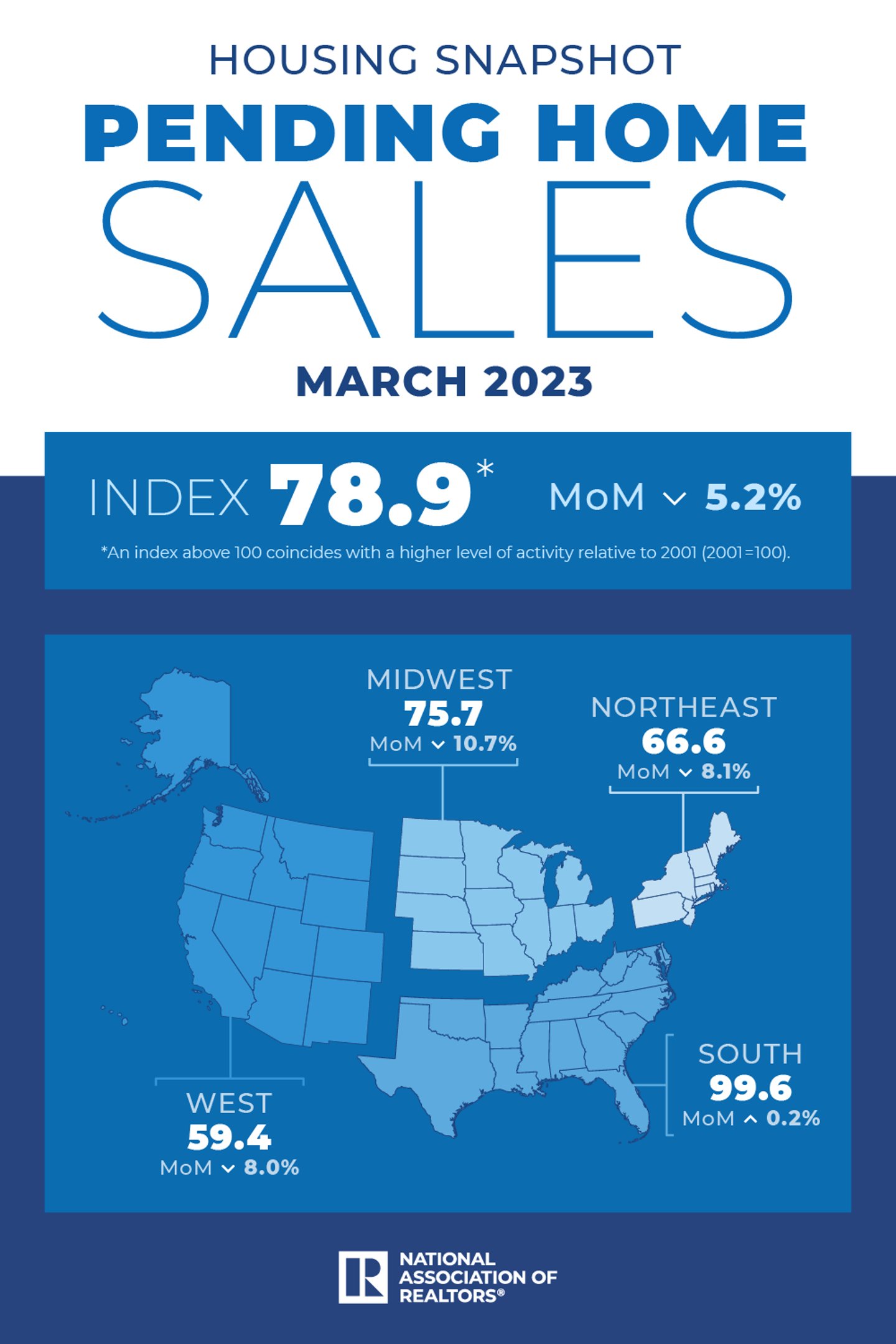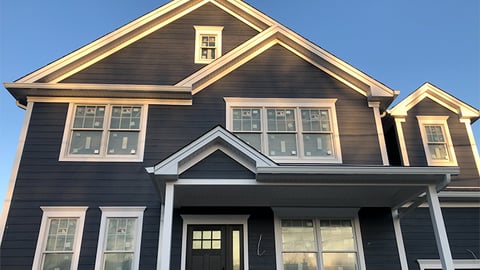Pending homes sales slide in March
For the first time since November 2022, pending home sales decreased.
The National Association of Realtors reported this morning that the Pending Home Sales Index (PHSI) fell 5.2% to 78.9 in March. Across the nation, three U.S. regions posted declines with the exception of the South. All four regions saw year-over-year declines in transactions.
The PHSI is a forward-looking indicator of home sales based on contract signings.
On a year-over-year basis pending transactions dropped by 23.2%. An index of 100 is equal to the level of contract activity in 2001.
“The lack of housing inventory is a major constraint to rising sales,” said NAR Chief Economist Lawrence Yun. “Multiple offers are still occurring on about a third of all listings, and 28% of homes are selling above list price. Limited housing supply is simply not meeting demand nationally.”
In contrast to pending home sales, new single‐family home sales were at a seasonally adjusted annual rate of 683,000 in March, rising 9.6% above the revised February rate of 623,000.
Combined existing-home sales, including completed transactions of single-family homes, townhomes, condominiums, and co-ops fell 2.4% from February to a seasonally adjusted annual rate of 4.44 million in March, the NAR reported earlier this month.
Existing single-family home sales declined 2.7% to a seasonally adjusted annual rate of 3.99 million in March from 4.10 million in February and 21.1% from one year ago.
The NAR forecasts that the economy will continue adding jobs, but at a slower pace, while mortgage rates will drop – with the 30-year fixed mortgage rate progressively falling to 6% this year and to 5.6% in 2024.
Housing starts will fall from last year by 7.3% in 2023, to 1.44 million, and then increase 6.9% in 2024, to 1.54 million, the NAR said.
“Sales in the second half of the year should be notably better than the first half as job gains continue and more favorable mortgage rates are expected,” said Yun. “Sales of new homes are already matching 2019 pre-COVID activity and are expected to increase in 2023, largely due to plentiful inventory in this segment of the market.”
The NAR also forecasts that median existing-home prices will mostly stabilize – with the national median existing-home price decreasing by 1.8% in 2023, to $379,600, and then improving by 2.8% in 2024, to $390,000.
The median sales price of new houses sold in March increased more than 3.8% to $449,800 compared to a median price of $433,200 in February. This is also a 3.2% increase from a median price of $435,900 for the same period a year ago.
The median existing single-family home price was $380,000 in March, down 1.4% from March 2022.
The expensive West region of the U.S. will see lower prices, but the affordable Midwest region will likely squeak out a positive gain, according to the NAR. The median new home price will be lower by 1.9% in 2023, to $449,100, followed by an improvement of 4.2% in 2024, to $468,000.
Here’s how pending homes sales performed by region:
- The Northeast PHSI fell 8.1% from last month to 66.6, a decline of 24.3% from March 2022.
- The Midwest index dropped 10.7% to 75.7 in March, down 21.5% from one year ago.
- The South PHSI improved 0.2% to 99.6 in March, falling 19.8% from the prior year.
- The West index decreased 8.0% in March to 59.4, reducing 32.2% from March 2022.
The NAR represents more than 1.5 million members involved in all aspects of the residential and commercial real estate industries.






